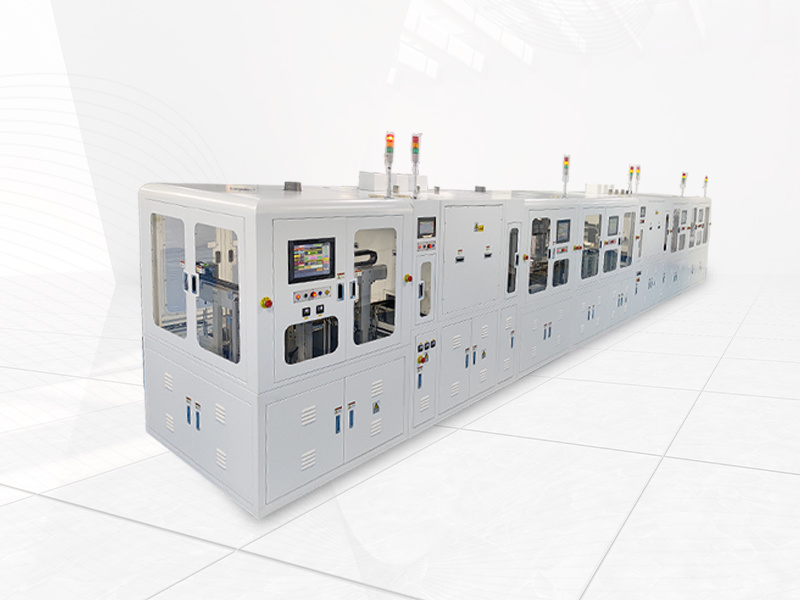Exploring the Benefits and Functionality of Automatic Dipping Machines
Release time:
Mar 17,2025
---
Automatic Dipping Machines are advanced pieces of equipment widely used in the manufacturing sector, particularly in processes that require the coating of various materials. These machines are designed to automate the dipping process, making it faster, more consistent, and more efficient. By understanding the functionality and advantages of these machines, manufacturers can optimize their production lines and improve product quality.
One of the primary functions of an Automatic Dipping Machine is to submerge objects into a coating solution, allowing for a uniform application of materials such as paints, adhesives, or protective coatings. This machine is particularly beneficial for products that require complete coverage, as it ensures that every surface is coated evenly, reducing the risk of imperfections that can occur with manual dipping methods.
The automation aspect of these machines brings numerous advantages. First and foremost, they significantly reduce labor costs and minimize human error. Manual dipping can be time-consuming and may result in inconsistent coating thicknesses, leading to defects in the finished product. With an Automatic Dipping Machine, the process is streamlined, allowing for higher production rates and improved quality control. Additionally, these machines can be programmed to dip objects for specific durations, ensuring optimal coating depth and consistency.
Another notable benefit of Automatic Dipping Machines is their versatility. They can be used for a wide range of products, from small components to large assemblies. This flexibility makes them ideal for various industries, including automotive, electronics, and consumer goods. Manufacturers can adapt these machines to accommodate different sizes and shapes, allowing for customization based on specific production needs.
Moreover, the efficiency of Automatic Dipping Machines contributes to sustainability efforts. By minimizing waste of coating materials and reducing the need for manual labor, these machines help companies lower their environmental impact. Efficient use of resources is essential in today’s manufacturing landscape, where sustainability is becoming increasingly important.
Despite these advantages, it’s essential for manufacturers to consider factors such as maintenance, cleaning, and operator training when integrating an Automatic Dipping Machine into their production line. Regular maintenance ensures that the machine operates at optimal efficiency, while proper training for operators maximizes its potential.
In conclusion, Automatic Dipping Machines are transformative tools in the manufacturing and processing industries. Their ability to enhance efficiency, ensure quality, and promote sustainability makes them invaluable for businesses looking to improve their production processes. As manufacturers continue to seek innovative solutions, the role of these machines is expected to expand, leading to even greater advancements in coating technologies.
Automatic Dipping Machines are advanced pieces of equipment widely used in the manufacturing sector, particularly in processes that require the coating of various materials. These machines are designed to automate the dipping process, making it faster, more consistent, and more efficient. By understanding the functionality and advantages of these machines, manufacturers can optimize their production lines and improve product quality.
One of the primary functions of an Automatic Dipping Machine is to submerge objects into a coating solution, allowing for a uniform application of materials such as paints, adhesives, or protective coatings. This machine is particularly beneficial for products that require complete coverage, as it ensures that every surface is coated evenly, reducing the risk of imperfections that can occur with manual dipping methods.
The automation aspect of these machines brings numerous advantages. First and foremost, they significantly reduce labor costs and minimize human error. Manual dipping can be time-consuming and may result in inconsistent coating thicknesses, leading to defects in the finished product. With an Automatic Dipping Machine, the process is streamlined, allowing for higher production rates and improved quality control. Additionally, these machines can be programmed to dip objects for specific durations, ensuring optimal coating depth and consistency.
Another notable benefit of Automatic Dipping Machines is their versatility. They can be used for a wide range of products, from small components to large assemblies. This flexibility makes them ideal for various industries, including automotive, electronics, and consumer goods. Manufacturers can adapt these machines to accommodate different sizes and shapes, allowing for customization based on specific production needs.
Moreover, the efficiency of Automatic Dipping Machines contributes to sustainability efforts. By minimizing waste of coating materials and reducing the need for manual labor, these machines help companies lower their environmental impact. Efficient use of resources is essential in today’s manufacturing landscape, where sustainability is becoming increasingly important.
Despite these advantages, it’s essential for manufacturers to consider factors such as maintenance, cleaning, and operator training when integrating an Automatic Dipping Machine into their production line. Regular maintenance ensures that the machine operates at optimal efficiency, while proper training for operators maximizes its potential.
In conclusion, Automatic Dipping Machines are transformative tools in the manufacturing and processing industries. Their ability to enhance efficiency, ensure quality, and promote sustainability makes them invaluable for businesses looking to improve their production processes. As manufacturers continue to seek innovative solutions, the role of these machines is expected to expand, leading to even greater advancements in coating technologies.








